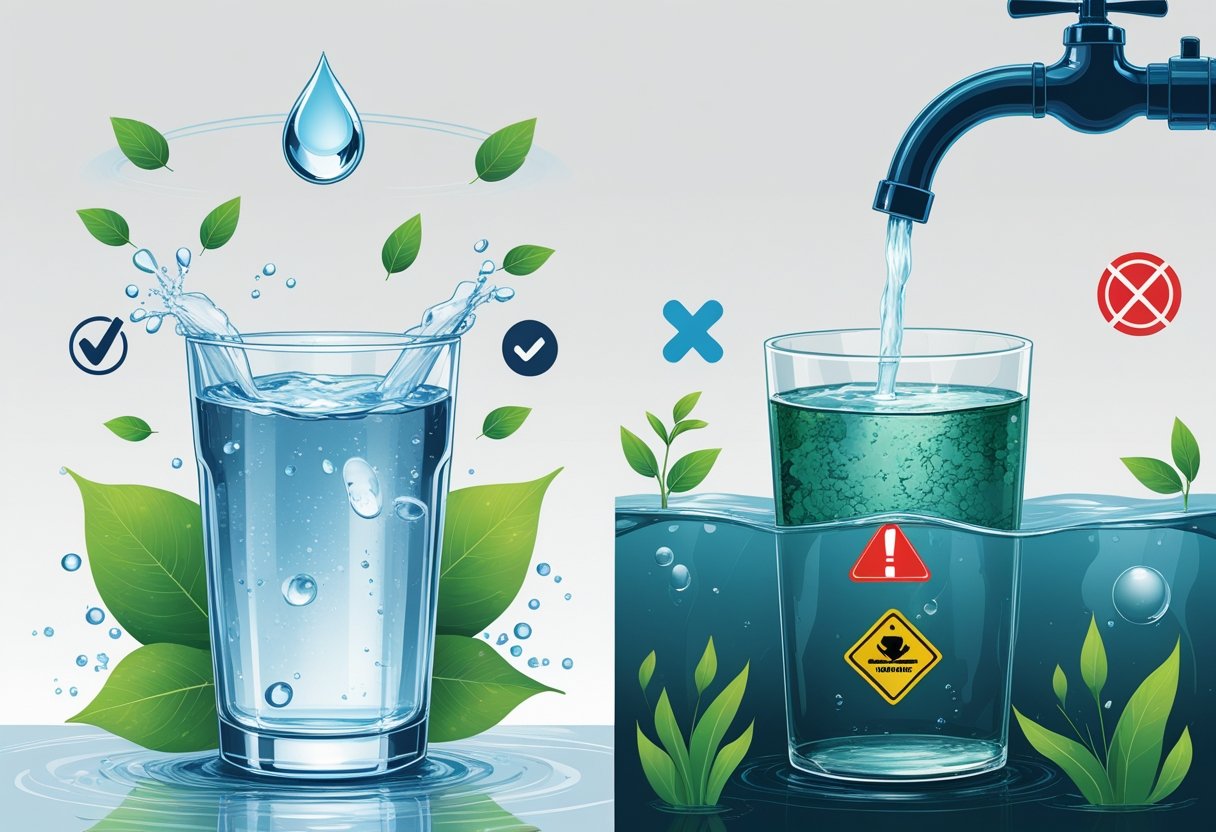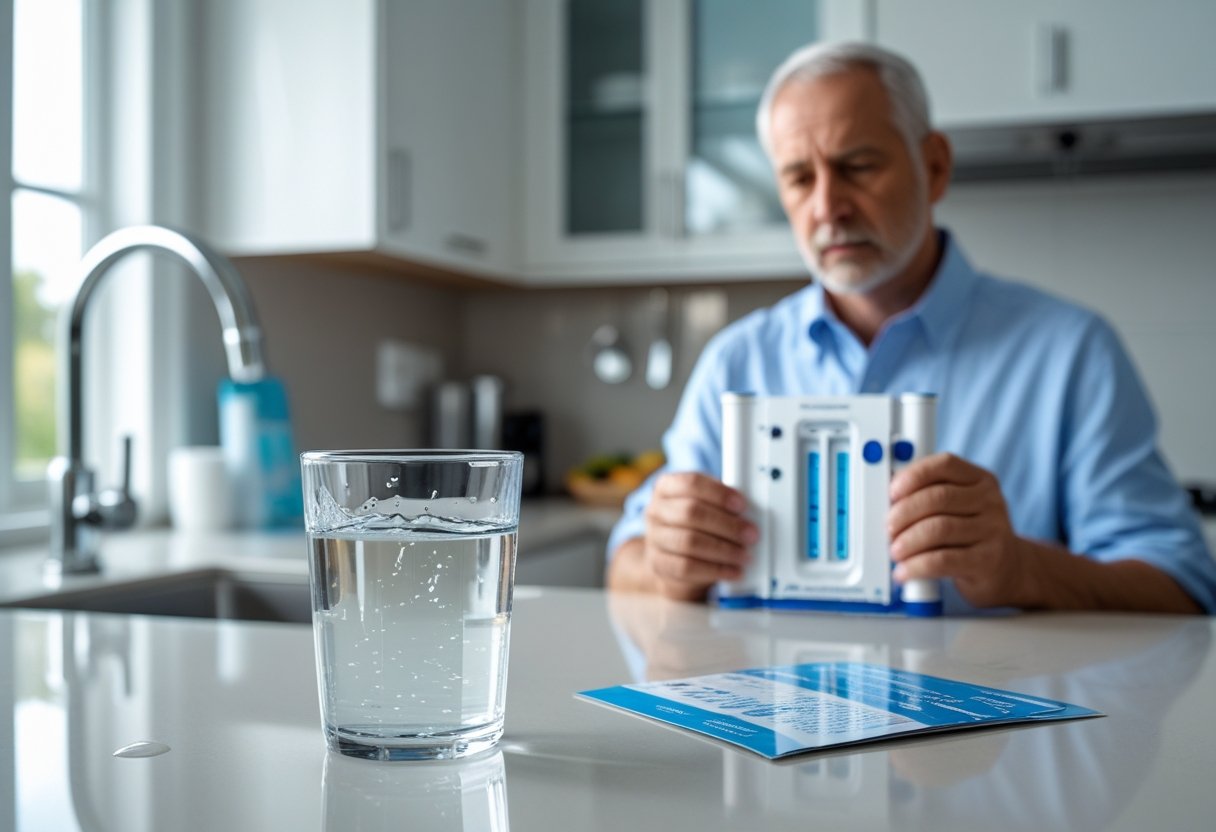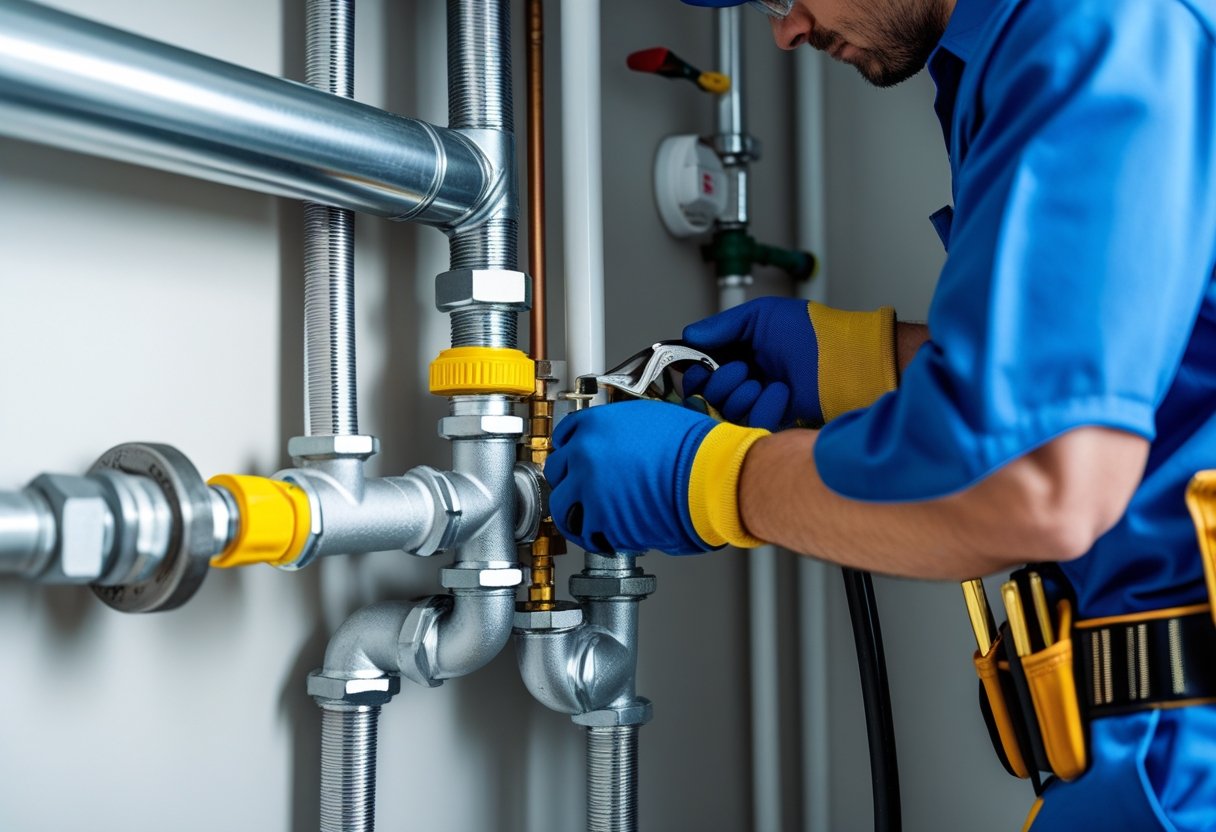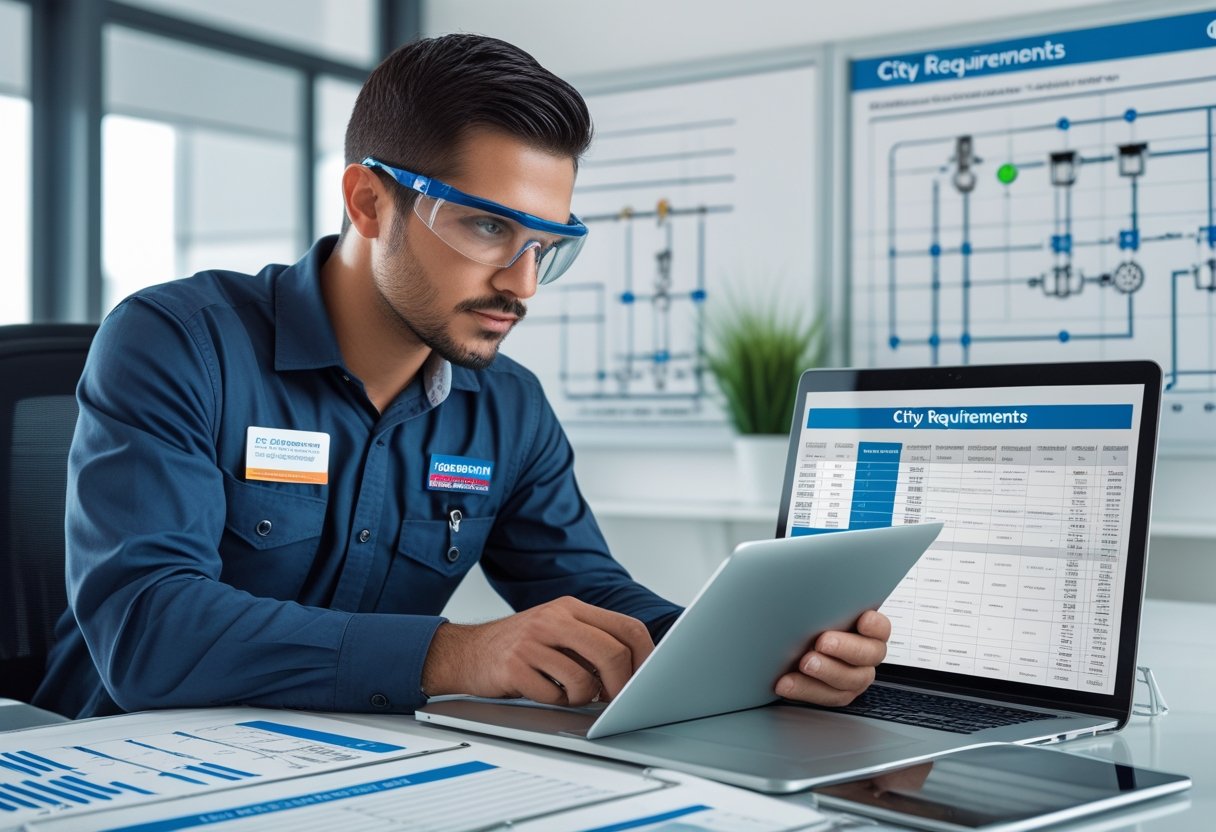Water is essential for life, but not all water is safe for consumption. Understanding the difference between potable and non-potable water is crucial for ensuring your health and safety. Potable water is safe to drink and meets strict safety standards, while non-potable water is not suitable for human consumption and is often used for purposes like irrigation or industrial processes.
Knowing these distinctions helps in making informed decisions about water use in your home or business. As a property owner in San Diego County, it’s important to ensure that your water systems are compliant and safe. For reliable backflow testing and maintenance, Pacific Backflow has served the community for nearly fifty years, prioritizing the protection of your water supply.
Whether you’re curious about your water quality or need professional backflow services, understanding potable and non-potable water ensures that you take the necessary steps to safeguard your health and the environment around you.
Defining Potable and Non-Potable Water
Understanding the definitions of potable and non-potable water is crucial for making informed decisions about water use. Recognizing the implications of these terms helps ensure safe practices in both residential and commercial settings.
What Is Potable Water?
Potable water refers to water that is safe for human consumption. It must meet specific standards set by health agencies, ensuring it is free from harmful contaminants. This includes bacteria, viruses, and chemical pollutants. Common sources of potable water include:
- Treated municipal water supplies
- Well water that has been tested and treated
- Bottled water from regulated sources
Regular testing is essential to maintain the quality of potable water. You can trust services like Pacific Backflow to ensure your water supply remains compliant with safety regulations. They provide thorough backflow testing and maintenance, which helps prevent contamination from non-potable sources.
What Is Non-Potable Water?
Non-potable water is water that is unsuitable for drinking due to the presence of harmful contaminants. It may come from sources like:
- Unfiltered surface water
- Treated wastewater
- Graywater from household uses
While non-potable water can be used for irrigation, industrial processes, or toilet flushing, it poses health risks if ingested. Awareness of its uses is key to avoiding accidental consumption. Proper handling and separation from potable systems are crucial in preventing backflow issues, which is another area where Pacific Backflow can assist you.
Key Differences in Water Quality
The most significant differences between potable and non-potable water lie in their quality and intended use.
- Purity: Potable water is treated and regularly tested, ensuring it is free from harmful contaminants, while non-potable water often contains pollutants that make it unsafe for drinking.
- Uses: Potable water is used for drinking, cooking, and sanitation. Non-potable water is utilized in applications like irrigation, vehicle washing, and industrial processes, where safe drinking is not a concern.
- Regulations: Potable water must meet stringent government guidelines, while non-potable water is subject to less strict regulations, focusing instead on its proper management and disposal.
Understanding these distinctions helps maintain public health and safety in your community.
Health and Safety Considerations
Understanding the health and safety implications of potable versus non-potable water is essential. Non-potable water can pose significant health risks if consumed, while testing for water quality can help ensure safety and compliance.
Risks of Consuming Non-Potable Water
Drinking non-potable water can lead to severe health consequences. Contaminated water may contain pathogens, chemicals, and heavy metals that are harmful to your health.
Common risks include gastrointestinal diseases, such as cholera and dysentery. These conditions arise from consuming water contaminated with bacteria or parasites. Additionally, exposure to hazardous chemicals can result in long-term health problems.
To mitigate these risks, it's crucial to treat non-potable water appropriately before considering any use, especially for drinking. Always ensure that the water quality meets safety standards.
Potential Waterborne Diseases
Waterborne diseases are linked to the consumption of contaminated water. Key diseases include cholera, dysentery, and giardiasis.
Cholera is caused by the bacterium Vibrio cholerae and can lead to severe diarrhea and dehydration. Dysentery, often resulting from infections, can cause painful diarrhea due to intestinal inflammation.
These diseases can be particularly devastating in areas with inadequate sanitation and water treatment. Therefore, staying informed about water quality is vital to prevent such illnesses.
Testing for Potability
To ensure water is safe for consumption, testing is necessary. Various methods test water for contaminants, assessing chemical and biological safety.
Regular testing can help identify hidden risks. It’s advisable to test drinking water sources, especially if you suspect contamination.
If you are in San Diego County, consider contacting Pacific Backflow for reliable backflow testing services. They provide compliant testing that protects water supplies, ensuring your drinking water is safe and sound.
Common Sources and Examples
Understanding the various sources of potable and non-potable water is essential for effective water management. This section covers key sources you encounter daily and highlights the importance of classifying them appropriately.
Tap Water and Its Classification
Tap water typically emerges from rivers, lakes, or underground aquifers. This water is treated and regulated, making it safe for drinking. In most urban areas, tap water is classified as potable because it meets specific health and safety standards.
Your local water authority frequently monitors this supply to ensure compliance with federal regulations. They initiate testing for contaminants to maintain its quality.
In contrast, water from kitchen sinks labeled as non-potable may originate from systems where contamination risks exist, such as irrigation systems. Understanding these distinctions ensures you only consume safe drinking water.
Rainwater and Surface Water
Rainwater harvesting has gained popularity for non-potable applications like irrigation and toilet flushing. This collected water is often not treated for drinking purposes and may retain pollutants from roofs or surfaces.
Surface water includes streams, lakes, and reservoirs. While some surface water can be treated to become potable, it frequently contains pathogens and sediments unsuitable for drinking. Proper management is essential to minimize contamination.
Understanding how to utilize rainwater responsibly can enhance conservation efforts while ensuring your health and safety. Implementing a filtration system can help if you consider using rainwater for consumption.
Treated Versus Untreated Water
Treated water has undergone purification processes to eliminate contaminants, making it suitable for drinking. This includes methods such as chlorination, filtration, and reverse osmosis. As a homeowner, you can trust that potable water provided by municipal systems meets safety standards.
Untreated water, on the other hand, includes natural sources found in lakes, rivers, and some well water. Such water poses health risks due to potential pathogens and pollutants.
It's crucial to avoid consuming untreated water without proper purification methods. For your backflow prevention needs, Pacific Backflow offers comprehensive testing and installation services to guarantee the safety of your water supply.
Storage, Delivery, and Usage
Understanding how to effectively store, deliver, and use potable and non-potable water is essential for ensuring safety and compliance. This section explores the types of water tanks available, best practices for storage, and safe delivery methods.
Water Tank Types and Regulations
Selecting the right water tank is crucial for maintaining water quality. Tanks for potable water must meet health regulations and be made from safe materials. Common types include:
- Polyethylene tanks: Lightweight and UV-resistant, ideal for residential use.
- Fiberglass tanks: Durable and corrosion-resistant, suitable for both potable and non-potable uses.
- Steel tanks: Often used for large-scale applications, must be lined to prevent contamination.
Regulations governing these tanks vary by region. Always ensure compliance with local health guidelines. For example, if you choose a tank for potable use in San Diego County, follow specific criteria to avoid contamination. At Pacific Backflow, we can help you understand these regulations.
Water Storage Best Practices
Proper storage maximizes the safety of both potable and non-potable water. Key considerations include:
- Temperature control: Store water in cool areas to prevent bacterial growth.
- Regular maintenance: Clean and inspect tanks periodically to remove sediments and keep water fresh.
- Sealing: Ensure that your tanks are tightly sealed to prevent pollutants from entering.
Utilizing separate tanks for potable and non-potable water can eliminate cross-contamination risks. Make sure to label tanks clearly to avoid misuse, especially in residential or agricultural settings.
Safe Water Delivery Methods
When it comes to delivering water, choosing safe methods protects the water's integrity. Potable water delivery often involves:
- Clean pipes: Ensure that delivery systems are free from rust and contaminants.
- Hoses made for drinking water: Use potable water hoses for transferring drinking water.
Non-potable water delivery methods differ and may include irrigation systems or graywater recycling setups. Ensure that backflow prevention measures are in place to protect your potable water sources. At Pacific Backflow, we provide reliable backflow testing to safeguard your water supply.
Practical Applications and Uses
Understanding the practical applications of potable and non-potable water is essential for efficient water management. Each type serves distinct purposes, impacting daily life, agriculture, and various industries.
Hydration and Daily Consumption
Potable water, often referred to as drinking water, is essential for hydration and daily consumption. It is treated and purified to remove harmful contaminants, ensuring it is safe for human consumption. You rely on it for cooking, drinking, and maintaining overall health.
In many regions, the availability of potable water is limited, making it crucial to conserve it. Practices such as using filtered water for drinking—while reserving tap water for cooking—can help make the most of this precious resource. Ensuring access to safe drinking water is vital for you and your family’s well-being.
Irrigation and Industrial Uses
Non-potable water plays a significant role in irrigation and various industrial applications. For farming, non-potable water sources, like treated wastewater or rainwater, can be utilized to irrigate crops efficiently. This method helps conserve potable water for drinking and cooking.
In industries, non-potable water can be used for cooling systems, cleaning, and manufacturing processes. This not only reduces overall water consumption but also lowers operational costs. By using non-potable water in these applications, you contribute to more sustainable water management practices.
Domestic Cleaning and Laundry
When it comes to domestic chores, non-potable water can be effectively used for cleaning and laundry. For instance, you can use non-potable water to flush toilets or wash outdoor surfaces. Utilizing this water type for non-consumptive purposes helps preserve the limited potable supply.
Certain systems can be installed in your home to collect and use non-potable water safely. This allows you to participate in conservation efforts while maintaining your household’s cleanliness. Ensure that your plumbing systems are compliant with local regulations to avoid any health risks. For reliable backflow testing and installation services, consider working with Pacific Backflow to protect your water supply.
Frequently Asked Questions
Understanding the differences between potable and non-potable water is vital for ensuring safety and compliance in water use. This section addresses common questions you might have, focusing on uses, health risks, and examples.
What are the typical uses for non-potable water?
Non-potable water is often used in irrigation, landscaping, toilet flushing, and industrial processes. It's ideal for tasks that require water but do not necessitate drinking water standards. Using non-potable water for these purposes conserves potable water resources.
What are the health risks of consuming non-potable water?
Consuming non-potable water can expose you to harmful contaminants, including bacteria, chemicals, and pathogens. These risks can lead to gastrointestinal diseases and other serious health issues. It is crucial to treat non-potable water correctly before any potential consumption.
In what ways is potable water different from pure water?
Potable water is treated and safe for drinking, while pure water refers to H2O without impurities. Although pure water may be devoid of contaminants, it must also meet specific regulatory standards to qualify as potable. Potable water is subject to regular testing and monitoring for safety.
What are some common examples of non-potable water sources?
Common examples of non-potable water sources include gray water from sinks and showers, stormwater runoff, and wastewater from toilets and industrial processes. Each of these sources can contain pollutants that render the water unsuitable for drinking.
Is it safe to bathe or shower with non-potable water?
Bathing or showering with non-potable water may be considered safe under certain conditions, depending on its source and treatment. However, it is important to understand the potential risks involved and to ensure the water is adequately treated to avoid skin irritations or infections.
For which purposes is non-potable water considered unsuitable?
Non-potable water is unsuitable for drinking, cooking, and any other direct human consumption. It's also not recommended for uses that require strict hygiene, such as medical procedures. Understanding these limitations helps maintain health and safety standards.
For reliable backflow testing and service in San Diego County, you can trust Pacific Backflow. They ensure your water systems meet all safety and regulatory requirements.











